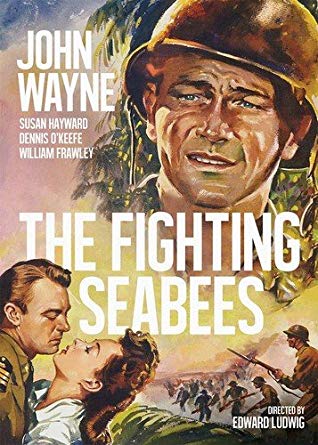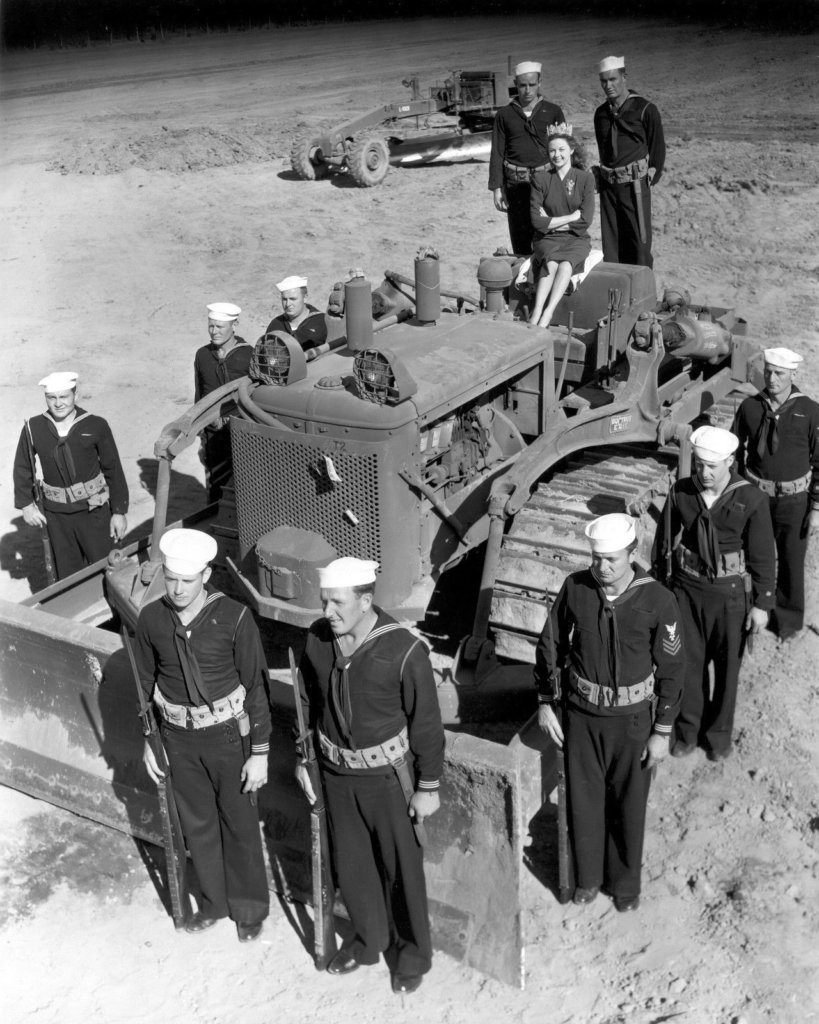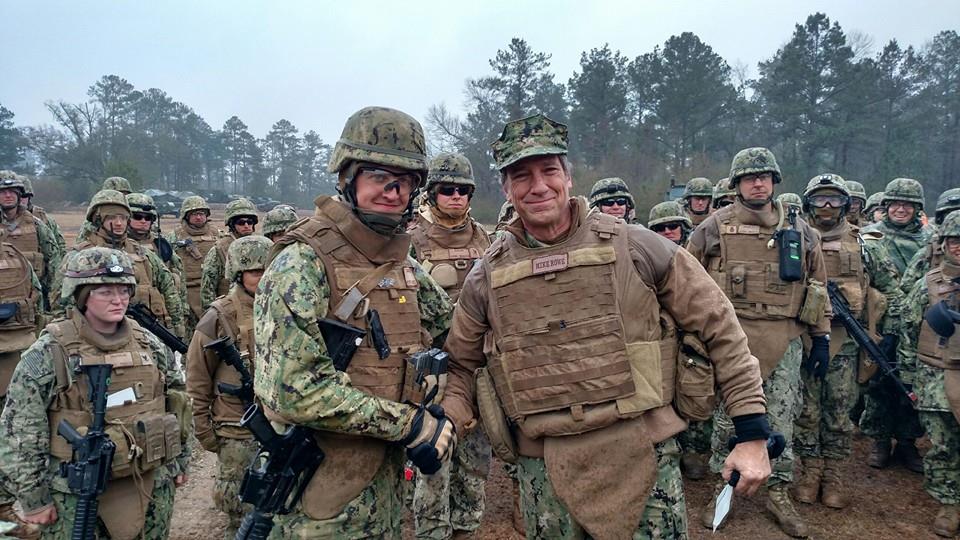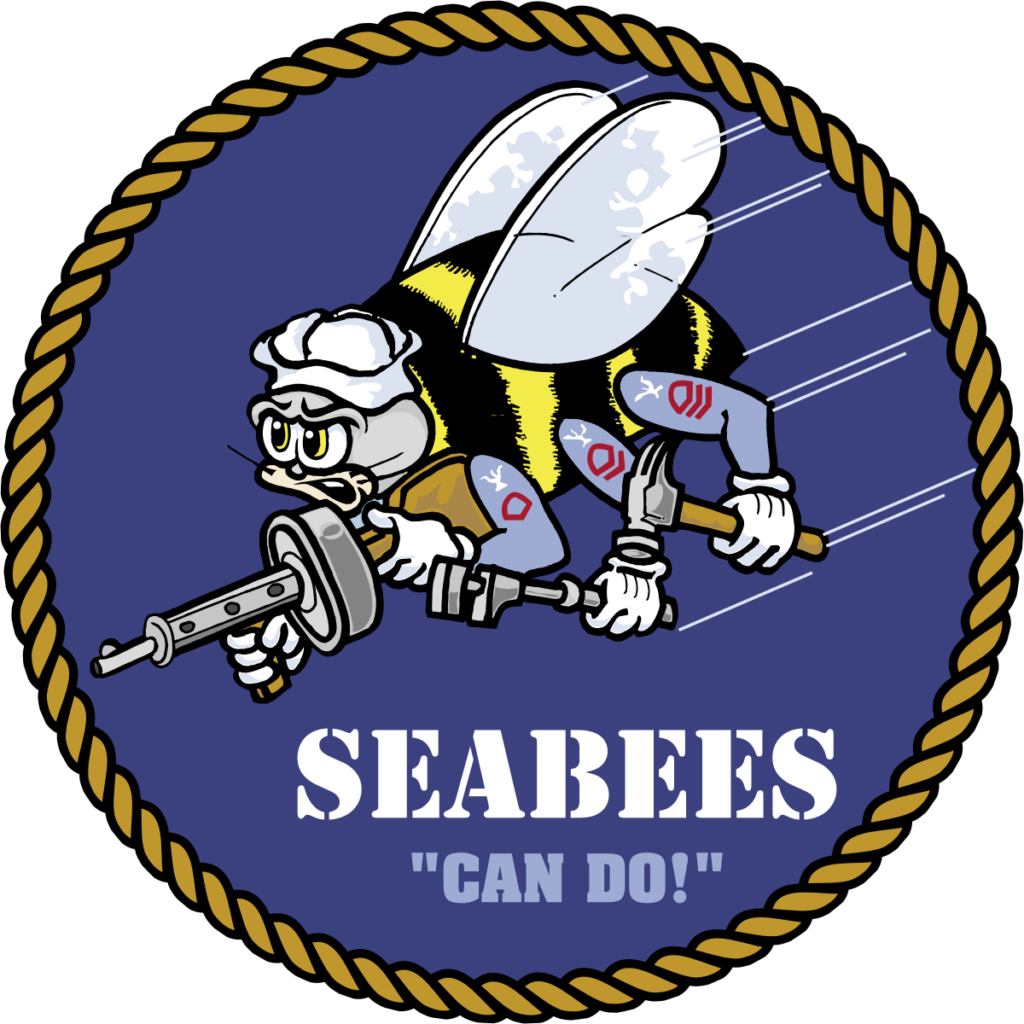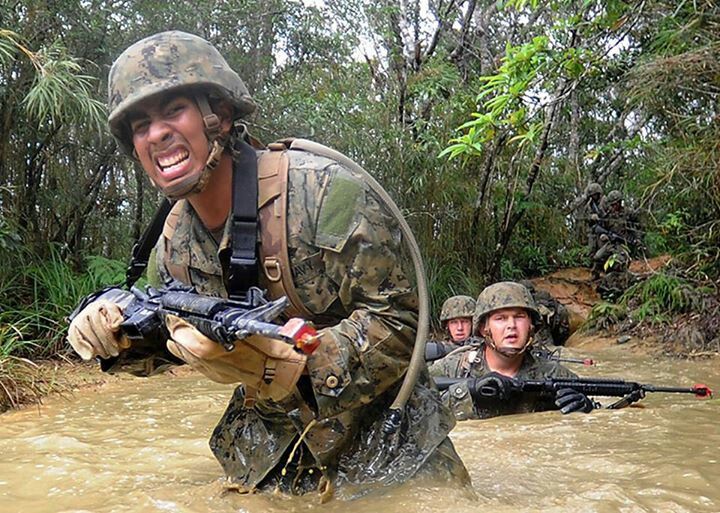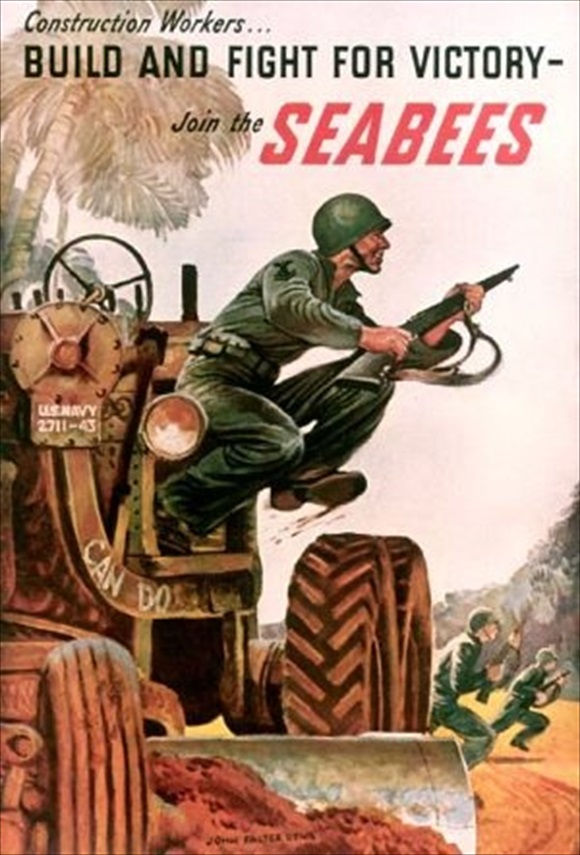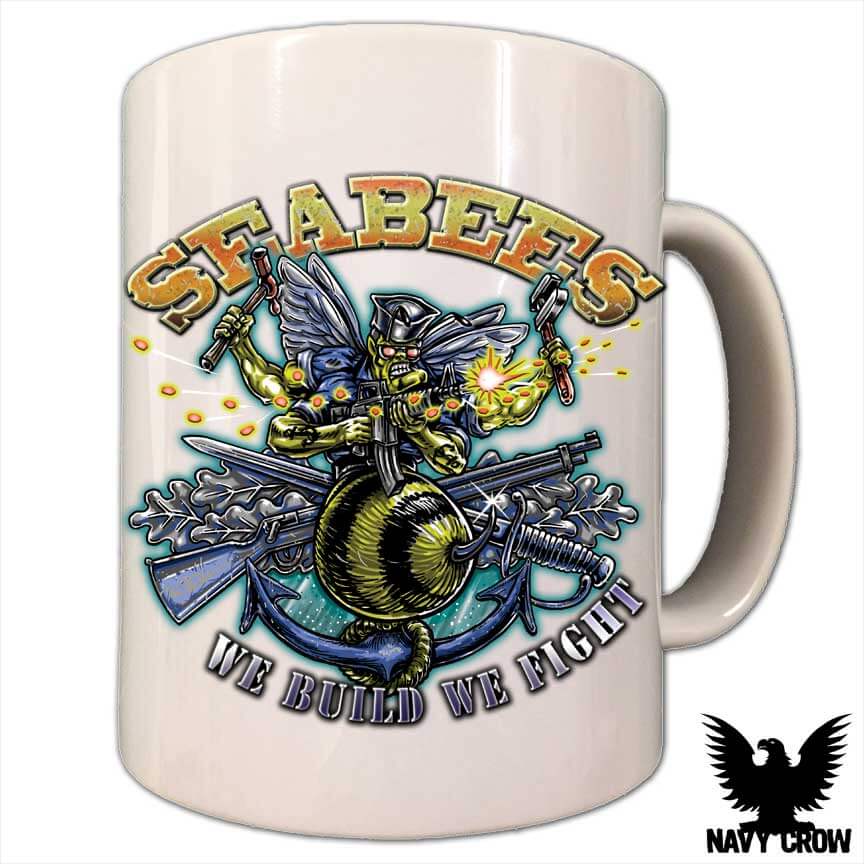Seabees of the US Navy, a legacy of Honor, Tradition, and Valor. Seabees: We Build, We Fight
The Seabees : We Build, We Fight. Been in the Navy a hot minute? Ever run across those Sailors that can both be your best friend and your worst enemy? Ever seen those guys and gals running around camouflage uniforms and hardhats? Since 1942 the Naval Construction Battalions or “Seabees” have been kicking a** and taking names (when they’re not too busy breaking things or drinking coffee).
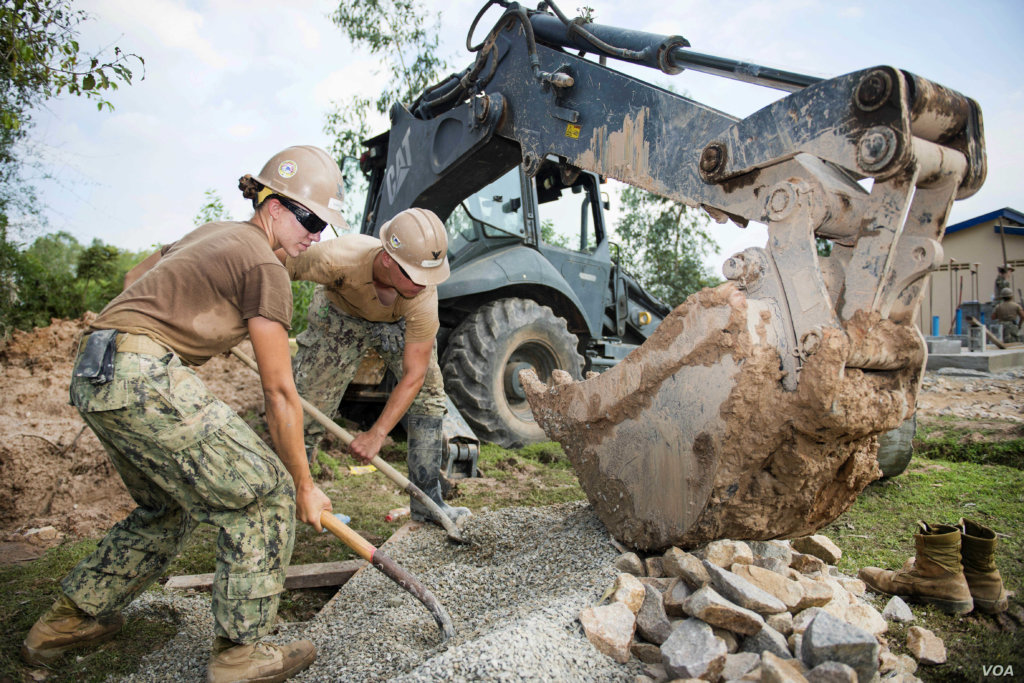
Engineering Aid 2nd Class Viktoria Thompson, left, and Utilitiesman 3rd Class Anatoliy Morsov both assigned to Naval Mobile Construction Battalion (NMCB) 5, shovel gravel for a five-stall bathroom NMCB 5 is building for the Sromo Primary School in Svay Rieng Province, Cambodia, Jan. 9, 2017. NMCB 5 is the forward deployed, Western Pacific NMCB, ready to support Major Combat Operations, Humanitarian Assistance and Disaster Relief operations. They provide general engineering and civil support to Navy, Marine Corps and joint operational forces. Homeported out of Port Hueneme, Calif., NMCB 5 has 14 detached sites deployed throughout the United States and Western Pacific area of operations. (U.S. Navy Combat Camera Photo by Mass Communication Specialist 1st Class Benjamin A. Lewis)
The term Construction Battalion has been in use since the mid 1930s when it was written into war plans. However, the U.S. Navy established the World War II date of 5 March 1942 as official for the founding of the Seabees. The name “Seabee” came from their initials of “CB” for Construction Battalion, formed in 1942 and made famous in the 1944 film The Fighting Seabees, starring John Wayne the “Bees” as they have become known have been involved in every major military operation since WW II and have earned their place in history.
Sailors tend to get all balled up when tossing back some cold ones. Remembering the ships that they called home, they will spend hours arguing the virtues of being on a “small boy” or “gator” or “bird farm”. All the while a Seabee will just wrinkle their brow and shrug their shoulders when asked about ship life. You’ll have to look hard to find a “Fleet” warfare pin on someone’s chest, let alone a Sailor who even can tell you what 3M means!
Ok so now you’re asking WTF is a Seabee anyways and where do they fall under the Navy ratings. The answer is a mixed bag, they have their own rating source of Constructionman vice Seaman, Fireman, Airman:
Construction Mechanic
Equipment Operator
Utilitiesman
Construction Electrician
Builder
Steelworker
Engineering Aide
Their jobs are not “Fleet” jobs. Rather they are part of the newly formed US Navy Expeditionary Combat Command, so you could say that while the Navy may pay their checks they really don’t think of themselves as a typical Navy Sailor. These Sailors may spend 20 plus years wearing the Uniform of a US Navy Sailor and never once set foot aboard a naval vessel. They fly overseas on deployment and are “boots on the ground” working for 7-10 months, rather than hitting up the liberty ports of the Mediterranean. This is just the beginning of the story, it’s what they do when they get there spending 7 – 10 months alongside the USMC in distant war zones, or helping out civilians conducting disaster recovery operations after a tsunami in the Pacific, building hospitals and runways in the middle of Africa to support humanitarian operations; you name the place and the task and dollars to donuts these men and women have been there and done that many times over!
WHAT’S IN A JOB?
The job descriptions don’t even begin to describe what the “Bees” are capable of, let alone the trouble that they stir up. While deployed to Iraq and Afghanistan the Bees were renowned for their legendary skills at taking a nail gun and driving nails through various body parts in the blink of an eye, selflessly sacrificing their own bodies all in the name of teamwork ensuring that the Corpsmen were up to speed on their medical skills.
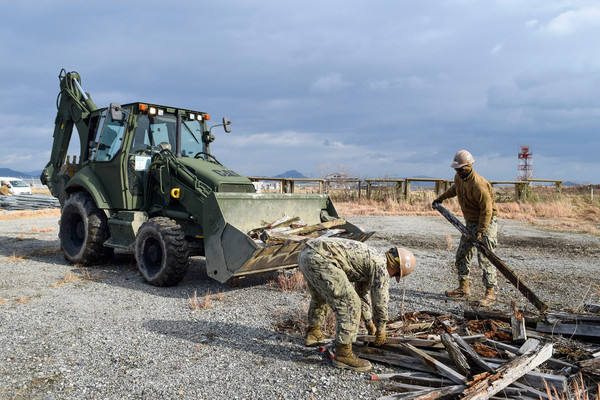
200108-N-EO124-1297 IWAKUNI, Japan (Jan. 8, 2020) Equipment Operator 3rd Class Marco Padilla, from San Antonio, and Equipment Operator 3rd Class Micheal King, from St. Stephen, South Carolina, deployed with Naval Mobile Construction Battalion (NMCB) 5’s Detail Iwakuni, put logs into the bucket of backhoe to clean the project site. U.S. Navy Seabees with NMCB-5’s Detail Iwakuni are constructing a landfill capping project in support of Marine Corps Air Station Iwakuni. NMCB-5 is deployed across the Indo-Pacific region conducting high-quality construction to support U.S. and partner nations to strengthen partnerships, deter aggression, and enable expeditionary logistics and naval power projection. (U.S. Navy photo by Construction Electrician 2nd Class Kayla Collins/Released)
WE BUILD
Seabees: We Build, We Fight. Their other forte is building (hence the motto); when I was in Iraq a dozen years ago one of the Seabee units was sent over to build us a new chow hall on the USMC Infantry camp that I called home. You had to give it to them, by the time they were finished the BUC in charge of the work detail bragged that with the sheer amount of concrete blast wall and earthen berms surrounding the “chow hall” they had just finished constructing could withstand a direct hit from a Soviet 82mm mortar (not that anyone really wanted to test that theory out). Not to mention that it had WORKING A/C a true luxury in the heat of the summer and big screen TVs. I challenge you to find someone else capable of this magnitude of skill and ferocity. Marine veterans from the Vietnam War often recalled that when they needed something built they would bring a few cases of beer over to the Seabee Camp to help “grease the wheels”.
WE FIGHT
Seabees: We Build, We Fight. The second half of the slogan “We Fight” represents that often Seabees serving in war zones have been called upon to not only provide construction of bases, landing strips, hospitals, piers, etc but also to defend themselves and their construction projects from enemy fires. Often times during the War On Terror Seabee Battalions were responsible for their own security, as the US Marines were stretched too thin to be much assistance. This was far from a new experience for these men and women, often times we think of the 21st Century battlefields as the first time that Seabees were in danger, one of the little known facts is that during Operation Overlord on the beaches of Normandy Seabees dodged enemy fires while erecting pontoon bridges to allow for the off-loading of troops and equipment from ship to shore. The Fighting Bees also were with the 1st Marine Division during the daring amphibious assault on the port of Inchon, Korea and were responsible for building piers and logistical resupply areas as the Marines continued to move north.
BEES IN THE COLD WAR AND COLD PLACES NOT AT WAR
After the Korean War the Seabees in 1955 began deploying annually to Antarctica in support of Operation Deep Freeze. The first “wintering over” party included 200 Seabees who constructed a 6,000-foot ice runway on McMurdo Sound. Despite a blizzard that once destroyed the entire project, the airstrip was completed in time for the advance party of Deep Freeze II to become the first to arrive at the South Pole by plane. Over the following years and under adverse conditions, Seabees added to their list of accomplishments such things as snow-compacted roads, underground storage, laboratories, and living areas. One of the most notable achievements took place in 1962, when the Navy’s builders constructed Antarctica’s first nuclear power plant, at McMurdo Station.
SEABEE LEGACY
Our story is far from complete, the Seabees were a driving force during the Vietnam War and participated in countless operations and battles. Seabees were deployed to Vietnam beginning in small numbers in June 1954 and extending to November 1972. By 1962, they began building camps for Special Forces. In June 1965, Construction Mechanic 3rd Class Marvin G. Shields was posthumously awarded the Medal of Honor for his actions. Camp Shields in Okinawa, Japan is named in his honor. Shields remains the only Seabee ever to be awarded the Medal of Honor.
Read more about the men and women of the US Navy Seabees. Seabees: We Build, We Fight!




